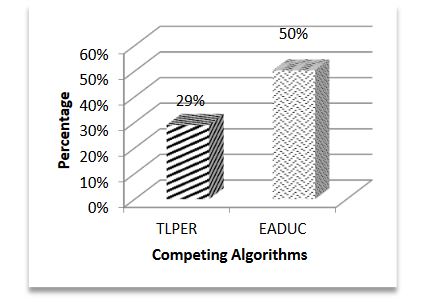ABSTRACT
Network lifetime and throughput are one of the prime concerns while designing routing protocols for wireless sensor networks (WSNs). However, most of the existing schemes are either geared towards prolonging network lifetime or improving throughput. This paper presents an energy efficient routing scheme for throughput improvement in WSN.
The proposed scheme exploits multilayer cluster design for energy efficient forwarding node selection, cluster heads rotation and both inter and intra-cluster routing. To improve throughput, we rotate the role of cluster head among various nodes based on two threshold levels which reduces the number of dropped packets. We conducted simulations in the NS2 simulator to validate the performance of the proposed scheme. Simulation results demonstrate the performance efficiency of the proposed scheme in terms of various metrics compared to similar approaches published in the literature.
LITERATURE SURVEY
In this section, we present some of the state-of-the-art techniques that we have also used, apart from, for the comparison with our proposed technique. Also at the end of this section, a tabular representation of various related techniques is given for ease in comparative analysis thereof. The Multilayer Cluster Designing Algorithm (MCDA) for Lifetime Improvement of wireless sensor networks by Jabbar et al is a hybrid approach in its communication architecture and architectural design perspectives. MCDA uses a multilayer approach comprising a first flat layer in the BS footprint and subsequent clustered layers.
PROPOSED SOLUTION

Figure 2. Switching of a CH to different roles based on its energy threshold levels
A depiction of the process for switching a CH in different roles based on its energy threshold levels is given in Figure 2. On reaching Ec = Ei/2 (i.e., the current energy of a node that is equal to half of the initial energy of that node) i.e., LBT status, the switching function triggers to change the role of “CH” to “CH with shared load”.

Figure 4. Intra-cluster and inter-cluster routing in MCDA network
If this forwarding node is not the CH then it directs the data to its CH. In the other case the CH sends the collected data to the “node with highest node degree carrying value” from its neighbor table. This process continues until data is collected at the BS. Figure 4 depicts these intra-cluster and inter-cluster routing processes in a more understandable form.
COMPARATIVE ANALYSIS OF PROPOSED SOLUTION WITH EADUC AND TLPER

Figure 7. Performance efficiency of EA R4MCDA over competing algorithms in total energy consumption
Figure 7 demonstrates this effect with 29% better performance of the proposed algorithm over TLPER and 50% over EADUC. Intra and inter-cluster routing makes it possible for this sensed data to reach the destination to end the routing. The energy efficient selection of forwarding nodes plays a vital role in the overall energy-aware routing process, as this selection decision has an effect on path length, node congestion, throughput and consequently energy conservation.

Figure 9. Average energy consumption for transmitting one packet from end to end
The effect of this high energy consumption in FN selection makes the overall communication expensive, since the FN in the path makes up a route for packet dissemination from source to sink. Figure 9 illustrates this point. Expensive FN selection in EADUC results in more costly communication of a data packet from end to end. In the graph, the resulting value bar for EAR4MCDA is far smaller than that of EADUC due to the aforementioned reason, though the path length and other factors also matter, so to make a fair comparison, these calculations are taken for the same path length.
CONCLUSIONS
Network performance is the cumulative effort of a number of integral and integrated steps. EAR4MCDA was an endeavor to ameliorate the network performance from an energy consumption aspect in the routing process. The architecture of MCDA was exploited for FN selection, inter and intra-cluster routing, CH rotation and all the way to final data delivery to make this overall process energy-aware.
Empirical results intuit that careful selection of FN leads to energy efficient intra-cluster and inter-cluster routing that combine to provide energy-aware routing. It is also construed from the results that though more clusters may produce more numbers of packets, other favorable factors are at play which result in improved throughput.
Otherwise, it is just a burden on the network and results in increased congestion, more packet drop ratio, more end to end delays and hence more energy consumption is needed to alleviate these issues and maintain the network performance. It is also deduced from the experiments that cluster he ad rotation in each round is not a sensible choice to implement, but rather letting the CH work until it consumes a specified amount of its energy, and then rotates its designation to some other suitable node, is a better option.
Source: Bahria University
Authors: Sohail Jabbar | Abid Ali Minhas | Muhammad Imran | Shehzad Khalid | Kashif Saleem
>> More Wireless Sensor Networks Projects Abstract for Engineering Students
>> More Wireless Energy Projects for Final Year Students
>> More Wireless Projects Implementation in Ns2 for Engineering Students